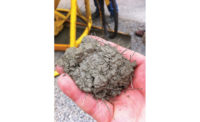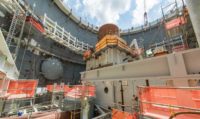Two recently updated ASTM International standards for seismic risk assessment of buildings, intended to increase the quality of SRA reports, could also cause an uptick in inspection costs. For the first time, the SRA standards mandate that the field assessor who visits the building is an experienced, licensed civil or structural engineer. The requirement will increase the cost of a report and may result in a shortage of qualified engineers to perform SRAs, say some report providers.
“This is a significant step that will provide guidance and, ultimately, will allow the provider community to behave more consistently from firm to firm. But it does require more work, and the price will go up,” says Joe Derhake, CEO of Partner Engineering and Science, which is a provider of the reports.
SRAs are often used by owners, lenders, loan servicers, insurers and real estate equity investors to determine a property’s potential for earthquake-induced losses. The assessments mostly are performed on buildings in high seismic zones. The reports are often a prerequisite for a real estate transaction and for rating commercial mortgage-backed securities.
The updates of American National Standards E-2026-16a: Standard Guide for Seismic Risk Assessment of Buildings and its companion, E-2557-16a: Standard Practice for Probable Maximum Loss (PML) for Earthquake Due-Diligence Assessments, are, in large part, a response to a downward trend in report quality, says Joshua Marrow, a co-chair of the ASTM E-2026 and E-2557 committee.
“We are trying to reestablish the credentials of the providers and improve the quality and consistency of the reports,” says Marrow, director of seismic and structural engineering for Blackstone Consulting LLC, a report provider.
In the 1990s, practicing structural engineers, who principally designed buildings, also prepared PML reports. Since then, it is more common for due-diligence firms assessing all aspects of a building to specialize in SRAs, as well.
“Under financial pressure, the firms may use persons who may have a degree in architecture or may be civil engineers but who do not have the experience and knowledge to quickly distinguish good from bad-performing buildings,” says Charles C. Thiel Jr., chairman emeritus of the E-2026 and E-2557 committee and a principal of engineer Telesis.
“Often, the site visit for the seismic review is performed by the same person who did the environmental and property condition reviews and who probably had no idea of what structural connections to look at,” adds Eugene Trahern, a principal of Cascade Crest Consulting Engineers and a committee member.
“We are trying to reestablish the credentials of the report providers and the consistency of the reports.”
— Joshua Marrow, Co-chair of the ASTM E-2026/2557 committee
Under the updated standard, the licensed-engineer senior assessor in responsible charge has to have at least 10 years of general-building structural engineering experience, five years of seismic design and analysis experience, and three years of SRA experience. The field assessor must have five years of general structural engineering, three years of seismic design and two years of SRA experience.
The current cost of an ASTM report for lenders, which account for about 60% of the $8 million to $10 million spent on reports each year, are in the range of $800 to $1,200. That figure is based on a property-condition assessor taking photos of the building for the senior assessor to use for the report, says Marrow.
SRAs for owners and long-term equity investors can cost $10,000 to $30,000 or more, adds Thiel.
Derhake says for the most common report, called a level-one report, the requirement for an experienced, licensed engineer-field assessor has the potential to increase report prices by 50%. “It depends on the building type, age, and if the plans are available,” he says. Absent plans, as is more often the case with older buildings, “we are going to need to do a lot more inspection,” he says.
Some providers and users worry about a shortage of qualified field assessors, due to the beefed-up credentials, that could delay reports. “There might be a [shortage] for six months, while the market corrects itself,” says Marrow.
The current standards address single buildings. ASTM is about to launch a subcommittee to develop a new SRA standard for real estate portfolios.




Post a comment to this article
Report Abusive Comment